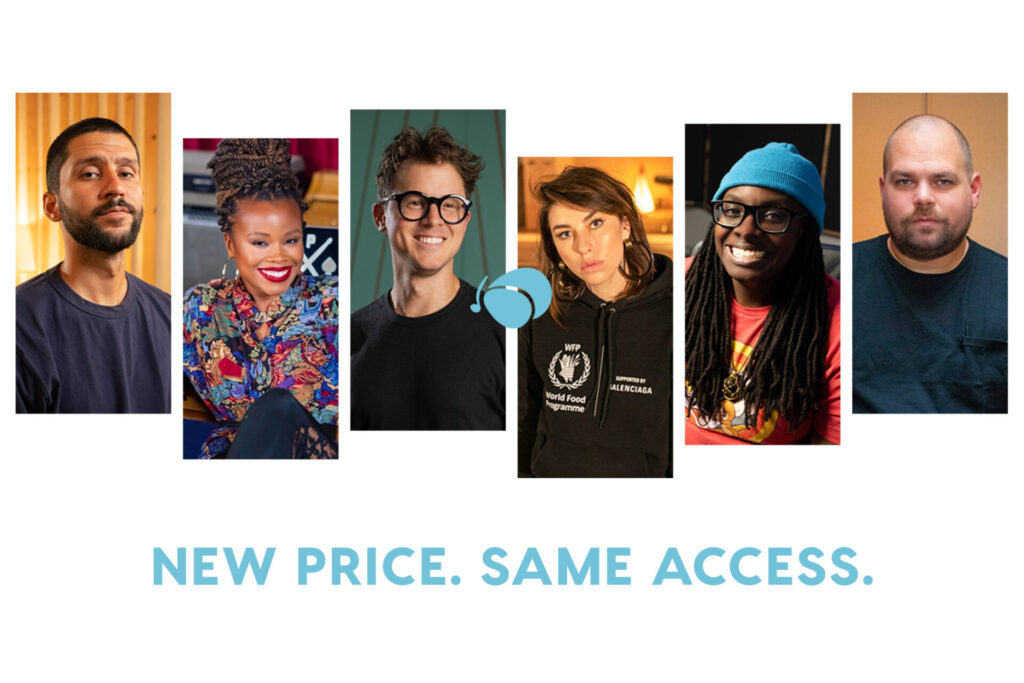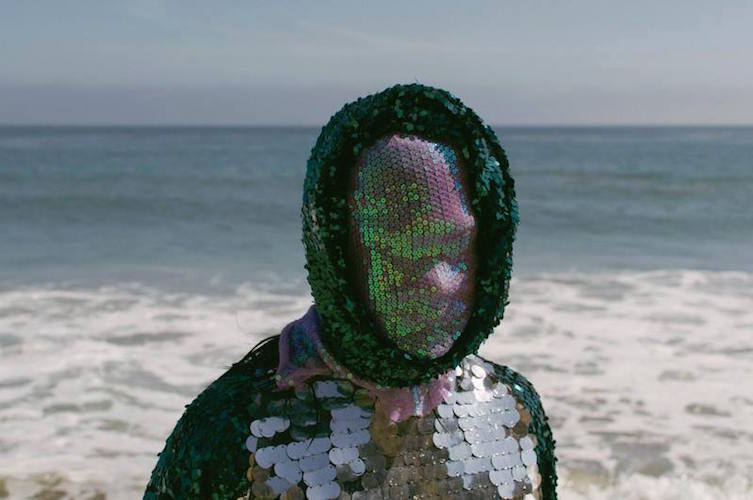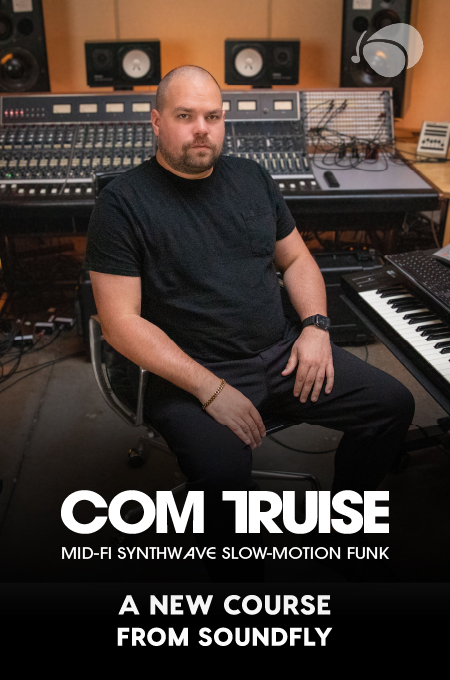+ Take your modern jazz piano and hip-hop beat making to new heights with Soundfly’s new course, Elijah Fox: Impressionist Piano & Production!
What is jazz to you? Is it the slightly irregular rhythms? The familiar sound of an upright bass? Or is it the freedom to interpret and improvise?
Naturally, there is no single answer to this question. By its nature, jazz evades strict definition — especially when its influence is so enormous, and “what jazz was” has since transformed into hundreds of different styles and genres. Continuing on our recent exploration of the ways jazz has influenced rock, pop, and hip-hop, I wanted to look into how electronic artists are infusing jazz into their work.
But that led to a second problem: How do you define electronic music? Is it the use of electronic and digital mediums? If so, isn’t all music today “electronic” to some degree? Like jazz, it’s been impossible for me to pinpoint a definitive characteristic of all electronic music. It’s too diverse. Just look at the number of electronic sub-genres in this list!
So to make it easier, I’m looking at artists who call themselves electronic musicians, and in particular, at the ones who I think are pushing the edges of the genre today — experimental electronic artists. You’ll notice that a lot of these artists don’t fit easily into a single genre — they blend many different ones, which is what makes them so interesting.
Let’s start with the most currently relevant (you’ll know why):
Kiefer
Los Angeles based keyboardist and producer, Kiefer, is a prime example of a jazz musician turned producer. In the modern era of bedroom producers Keifer’s jazzy piano riffs, Boom bap inspired drums, and funky bass lines. Kiefer is equally adept at home programming beats in Ableton Live and live looping keyboards and bass lines as he is playing in an ensemble setting.
It’s that multifaceted approach to musicianship that we wanted to capture when Soundfly asked Kiefer to collaborate on an exciting new course that just launched! In it, Kiefer showcases his approach to the piano and keys, and making modern piano-based beat music, by tackling various writing challenges and explaining how he creatively navigates each one. He explores how to write sophisticated and soulful chord changes, harmonize with a melody, manifest exciting solos, fashion short loops into interesting beats, and so much more. Check out Kiefer: Keys, Chords, & Beats!
He’s landed placements on Anderson’s Paak’s album, Oxnard, as well as being sampled on Drake’s latest release, Certified Lover Boy. As a performer he has ventured out as a solo act and as part of a trio with fellow producers Mndsgn and Swarvy. Kiefer recently released his latest project on legendary hip-hop label, Stones Throw Records. His latest album is his first with a full band and is his most “jazz” outing to date. It’s clear that Keifer can conjure everything from late ’60s soul and modal jazz to crisp neo soul beats of the Soulquarian era.
Squarepusher
Squarepusher, a.k.a. Tom Jenkinson, is the poster child for this discussion — a trailblazer in the movement. Signed to Warp Records (THE label for all the big names in electronic music and IDM, see: Aphex Twin) who have handled all his releases since 1997, Jenkinson continues to push out music that evades genre. In April 2015, he released his first solo LP album in three years, Damogen Furies, which he describes as his attempt to “explore as forcefully as possible the hallucinatory, the nightmarish and the brutally visceral capacities of electronic music.”
His music is overwhelmingly eclectic — a musical minefield of genre amalgamation. He pulls from not only jazz, but also acid house, drum ‘n’ bass, ambient, jungle, and electro acoustic music. In my eyes, Squarepusher is a jazz musician at heart, but his musical mind wanders deep into electronic experimentation.
Flying Lotus
Flying Lotus, a.k.a. FlyLo, a.k.a. Steven Ellison, is the next generation Squarepusher. Where Squarepusher may have started the “nu jazz” conversation with a few people in Britain, Flying Lotus lead a global conference. He founded Brainfeeder, a label that is pioneering the blending of jazz with electronic and hip-hop by signing artists like Kamasi Washington, Thundercat, and Taylor McFerrin. Like Squarepusher, FlyLo himself is signed to Warp Records, his most recent release being the studio album You’re Dead in 2014. On this, he collaborates with Kendrick Lamar on the hit “Never Catch Me.”
Though You’re Dead was a brilliant album (like all of his albums, really) Cosmograma is his masterpiece. Released in May 2010, the album marked a new era for FlyLo. Where his previous albums relied predominantly on electronic and digital mediums, Cosmograma draws on many acoustic instruments and live performances. It also features an epic line up of guests including, Thom Yorke, Laura Darlington, and of course, Thundercat.
Taylor McFerrin
Taylor McFerrin, as mentioned, is signed to FlyLo’s label Brainfeeder with whom he released his debut album Early Riser in 2014. McFerrin is the eldest son of the legendary vocalist Bobby McFerrin, and I can confidently confirm that McFerrin junior has inherited the jazz gene. Taylor McFerrin’s foundation as a musician is quite eclectic; he’s a vocalist, keyboardist producer, and beatboxer… essentially a multi-instrumentalist.
On Early Riser, he explores this ambient, atmospheric space where he takes his listeners on what feels like a sonically-induced acid trip in a rainforest. His influences range from Stevie Wonder all the way to J Dilla, stopping by at Brian Eno’s crib. Taylor McFerrin is a jazz fusionist, more so than an electronic musician. On Early Riser, he collaborates with Thundercat, Robert Glasper, Nai Palm, Cesar Mariano, Emily King, and daddy dearest!
+ Enjoy access to Soundfly’s suite of artist-led music learning content for only $12/month or $96/year with our new lower price membership. Join today!

Mndsgn
Ringgo Ancheta a.k.a. Mndsgn (pronounced: “mind design”) is another producer who dabbles in between jazz, hip-hop, and electronic. Signed to Stones Throw Records, Mndsgn released his debut album Yawn Zen in 2014.
Personally, he has a captivating backstory: His parents were members of the Philippine arm of the Aum Supreme Truth Cult, and fled to the US in the late 1980s following the group’s turn towards terrorism. They were granted political asylum and settled in rural New Jersey where Mndsgn grew up with no electricity. He had never heard modern music before he hitchhiked to Philadelphia, which is where his musical career began.
Yawn Zen is a extensive expedition into his musical mind — with warm, fuzzy harmonies surely inspired by the LA summer vibes. One wonders how someone who had such minimal exposure to musical influence growing up can make something like Yawn Zen…. must be a really quick learner. The album is a low-key, mad chill, and meditative journey. Mndsgn’s innocent vocals layered with the neo-soul and space disco vibe, place him right in the center of our discussion.
Lionmilk
Lionmilk sounds something like the East Coast equivalent of Mndsgn. His real world name is Moki Kawaguchi and, full disclosure, he’s a good friend of mine. I met Moki at The New School in an Ambient Music class, which is an appropriate place to meet someone like Lionmilk. He spends his days playing keys for The Breathing Effect, signed to Alpha Pup Records. But when the sun sets, Lionmilk emerges with his otherworldly sound and dreamy vocals.
Like all the artists in the article, I have a hard time putting Lionmilk into a box, but if I must, I would describe Lionmilk’s music as an interplay between experimental jazz and experimental electronic. Though it’s clear to any listener that he’s got a major hip-hop influence.
YUMS is a world of its own — another realm of sounds! Lionmilk creates this soundscape of ambient sounds, eerie conversations, smooth Rhodes, and his own indie-style vocals, that invites the listener to get lost inside. So, listen up NYC! Lionmilk is the best kept secret I’ve come across in a while and I don’t say that lightly, so go listen to his music and share it!
Zack Sekoff
Another LA native! Zack, a 19 year old vocalist/multi-instrumentalist, has quickly established himself in the electronic/soul/jazz renaissance. He released his debut album Remnant of a Winter Sun this past January, through Alpha Pup Records. Before that, the young talent was hanging out with modern jazz icons like Austin Peralta and the duo J*Davey.
Before releasing the debut, Zack wrote pieces for Vice, Stussy, AND was performing in big shot venues like Low End Theory. Now, he’s studying at Yale University (yes, freaking YALE!) 3,000 miles away from home, and with all the work that they presumably give you at Yale, he still found time to release a brilliant album. The kid is talented. “Debautchery” off of Remnant of a Winter Sun features Brainfeeder’s virtuoso Thundercat, and premiered on XLR8R before the release of the album.
Do you know other artists working to define a new space between jazz and electronic music? Share their music in the comments below!
Play Your Heart Out!
Continue your learning adventure on Soundfly with modern, creative courses on songwriting, mixing, production, composing, synths, beats, and more by artists like Kiefer, Kimbra, Com Truise, Jlin, Ryan Lott, RJD2, and our newly launched Elijah Fox: Impressionist Piano & Production.




